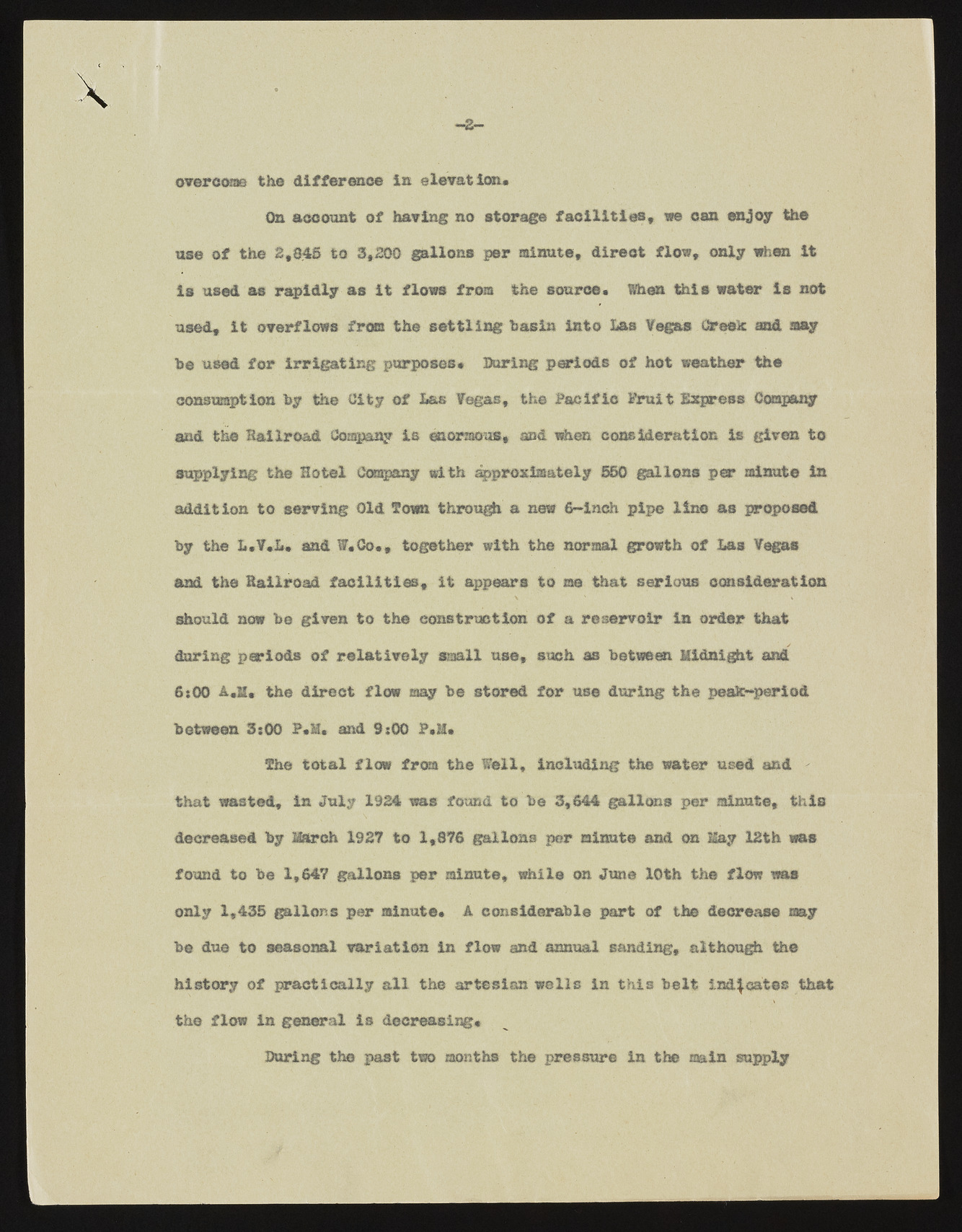Copyright & Fair-use Agreement
UNLV Special Collections provides copies of materials to facilitate private study, scholarship, or research. Material not in the public domain may be used according to fair use of copyrighted materials as defined by copyright law. Please cite us.
Please note that UNLV may not own the copyright to these materials and cannot provide permission to publish or distribute materials when UNLV is not the copyright holder. The user is solely responsible for determining the copyright status of materials and obtaining permission to use material from the copyright holder and for determining whether any permissions relating to any other rights are necessary for the intended use, and for obtaining all required permissions beyond that allowed by fair use.
Read more about our reproduction and use policy.
I agree.Information
Digital ID
Permalink
Details
More Info
Rights
Digital Provenance
Publisher
Transcription
overcome the difference is elevat ion. On account of having no storage facilities, we can enjoy the use of the 2,045 to 3,200 gallons per minute, direct flow, only when it is used as rapidly as it flows from the source. Shea this water is not used, it overflows frost the settling basin into las Vegas Creek and may be used for irrigating purposes* During periods of hot weather the consumption by the City of Las Vegas, the Pacific Fruit Express Company and the Railroad Company is enormous, end when consideration is given to supplying the Sotel Company with approximately 550 gallons per minute in addition to serving Old Town through a new 6-inch pipe line as proposed by the L.Y.L. and W.Co., together with the normal growth of Las Vegas and the Railroad facilities, it appears to me that serious consideration should now bo given to the construction of a reservoir in order that during periods of relatively small use, such as between Midnight and 6:00 A.H, the direct flow my be stored for use during the peak-period between 3:00 P.H. and 9:00 P*M. The total flow from the Well, including the water used and that wasted, in July 1924 was found to be 3,644 gallons per minute, this decreased by March 1927 to 1,876 gallons per minute and on May 12th was found to be 1,64? gallons per minute, while on June 10th the flow was only 1,435 gallons per minute, A considerable part of the decrease may be due to seasonal variation in flow and annual sanding, although the history of practically all the artesian wells in this belt Indicates that the flow in general is decreasing* During the past two months the pressure in the main supply

